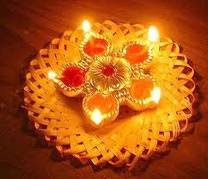About Diwali
Diwali popularly known as the "festival of lights", is an important one-day festival in Hinduism, Jainism, and Sikhism, celebrated for different reasons, occurring between mid-October and mid-November. For Hindus, Diwali is one of the most important festivals of the year and is celebrated in families by performing traditional activities together in their homes.
The name "Diwali" is a contraction of "Deepavali" which translates into "row of lamps". Diwali involves the lighting of small clay lamps (diyas or di-pas) in Sanskrit filled with oil to signify the triumph of good over evil. During Diwali, all the celebrants wear new clothes and share sweets and snacks with family members and friends.
The Origin of Diwali
Historically, the origin of Diwali can be traced back to ancient India, when it was probably an important harvest festival. However, there are various legends pointing to the origin of Diwali or 'Deepawali.' Some believe it to be the celebration of the marriage of Lakshmi with Lord Vishnu. Whereas in Bengal the festival is dedicated to the worship of Mother Kali, the dark goddess of strength. Lord Ganesha, the elephant-headed God, the symbol of auspiciousness and wisdom, is also worshiped in most Hindu homes on this day. In Jainism, Deepawali has an added significance to the great event of Lord Mahavira attaining the eternal bliss of nirvana. Diwali also commemorates the return of Lord Rama along with Sita and Lakshman from his fourteen year long exile and vanquishing the demon-king Ravana. In joyous celebration of the return of their king, the people of Ayodhya, the Capital of Rama, illuminated the kingdom with earthen diyas (oil lamps) and burst crackers.
 Diwali Celebration of Light.
Diwali Celebration of Light.
No comments:
Post a Comment